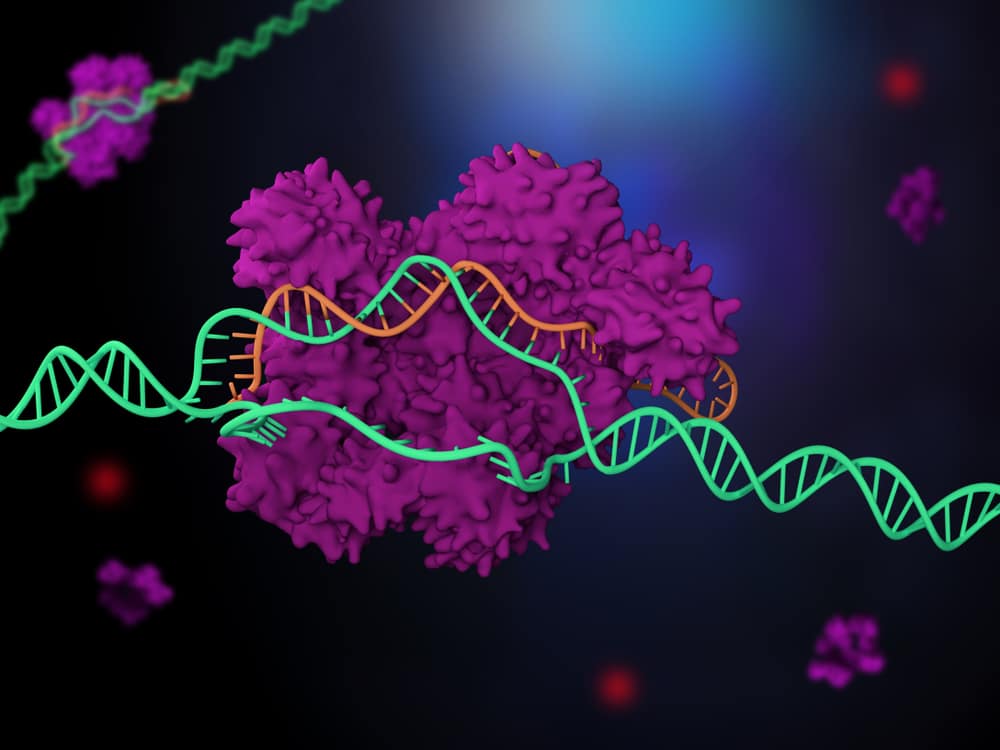CRISPR-Cas9 is widely used to edit the genome by studying genes of interest and modifying disease-associated genes. However, this process can be associated with potential side effects, including unwanted mutations and toxicity.
Researchers at Kyushu University and Nagoya University School of Medicine in Japan have developed an optimized genome-editing method that vastly reduces mutations, opening the door to more effective treatment of genetic diseases with fewer unwanted mutations.
Their findings were published in Nature Biomedical Engineering.
Genome-editing technology centered on CRISPR-Cas9 has revolutionized the food and medicine industries. In the technology, Cas9 nuclease, an enzyme that cuts DNA, is introduced into the cell with a synthetic guide RNA (gRNA) that guides the enzyme to the required location. By cutting the genome, unwanted genes can be deleted, and new (functional) genes can be added in easily and quickly.
One of the drawbacks of genome editing is that there are growing concerns about mutations and off-target effects. This is often caused by the enzyme targeting genomic sites that have a sequence similar to the target site. Similarly, mutations at the chromosome level can occur when genes are altered, which has hindered clinical trials of gene therapy. The researchers hypothesized that current editing protocols that use Cas9 cause excessive DNA cleavage, resulting in some of the mutations.
Testing gene editing
To test this hypothesis, a group consisting of Masaki Kawamata at Kyushu University and Hiroshi Suzuki at the Nagoya University Graduate School of Medicine constructed a system called “AIMS” in mouse cells, which evaluated the activity of Cas9 separately for each chromosome. Their results showed that the commonly used method was associated with very high editing activity. They determined that this high activity was causing some of the unwanted side effects, so they searched for gRNA modification methods that could suppress it.
They found that an extra cytosine extension to the 5′ end of the gRNA was effective as a “safeguard” for the overactivity and allowed control over DNA cleavage. They called this fine-tuning system ‘safeguard gRNA’ ([C]gRNA).”
Using the new technique, off-target effects and cytotoxicity were reduced, the efficiency of single-allele selective editing was increased, and the efficiency of homology-directed repair, the most commonly employed mechanism for DNA double-strand break repair, was enhanced.
To test its effectiveness in a medical setting, they investigated a rare disease called fibrodysplasia ossificans progressiva. Using a mouse model, they created the same genotype as the human version of the disease. Then, using patient-derived iPS cells, they were able to precisely repair damage down to a single nucleotide specifically in the disease-associated allele causing the disease, demonstrating the technique as a safe and efficient gene therapy method.
The team also constructed the first mathematical model of the correlation between various genome-editing patterns and Cas9 activity, which would enable the user to simulate the results of genome editing in an entire cell population. This breakthrough would allow researchers to determine the Cas9 activity that maximizes efficiency, reducing the costs and labor required.
Applications in medicine
“We established a new genome editing platform that can maximize the desired editing efficiency by developing activity-regulating [C]gRNAs with appropriate Cas9 activity. Furthermore, we found that ‘safeguard gRNA’ can be applied to various CRISPR tools that require gRNAs by regulating their activities, such as those using Cas12a, which has a different DNA cleavage mechanism,” Suzuki said.
“For techniques that use Cas9 to activate or repress genes of interest, such as CRISPR activation and CRISPR interference, excessive induction or suppression of gene expression may be not useful and even harmful to cells. Controlling expression levels by [C]gRNA is an important technology that can be used for various applications, including the implementation of precise gene therapy.”
The group is now working on a start-up business plan to spread the new genome editing platform.
“In particular, we believe that this technology can make a significant contribution to the medical field,” Kawamata said.
“We are currently evaluating its therapeutic efficacy and safety for selected target diseases in cell and animal experiments and using it to help develop therapeutic drugs and gene therapy methods, especially for rare diseases for which no treatment methods have yet been established.”
The discovery comes after scientists at the Helmholtz Institute Würzburg in Germany, and Benson Hill, Inc. (Missouri) and Utah State University in the U.S. found a nuclease, which they dubbed Cas12a2, that represents an entirely new type of CRISPR immune defense.
Unlike any other previously known nuclease of the CRISPR-Cas immune system, the source of ‘gene scissors,’ Cas12a2 destroys DNA to shut down an infected cell. The findings could lead to new CRISPR technologies.





